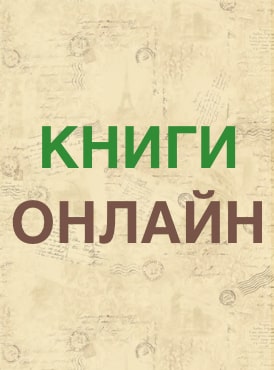В пучине бренного мира. Японское искусство и его коллекционер Сергей Китаев - Евгений Семенович Штейнер
- Дата:13.02.2025
- Категория: Научные и научно-популярные книги / Культурология
- Название: В пучине бренного мира. Японское искусство и его коллекционер Сергей Китаев
- Автор: Евгений Семенович Штейнер
- Просмотров:0
- Комментариев:0
Шрифт:
Интервал:
Закладка:
It is difficult to highlight any special prints from a typical roster of big names. The catalogue represents the usual fare of Hiroshige and Hokusai series, Utamaro women, Eizan, Eisen. What is distinctive is that they look as though they failed to pass numerous crash tests. Among the almost obliterated prints are rarities such as Hokusai’s Small Shell (Kogai) (no. 439, vol. 1, p. 313) from the 1821 surimono series Genroku Immortal Shell Matching Contest (Genroku kasen kai awase); the only other known example is in the Chiba Prefectural Museum of Art.
However, there are still a few unique prints in reasonably good condition, including two surimono by Ryūryūkyo Shinsai (1764(?)–1820/23). Still Life with a Target was commissioned by the Taikogawa (Drum group) kyо̄ka poetry club and bears three poems, one by the group’s leader, Dondontei. A similar surimono is described by Roger Keyes in his catalogue of the Chester Beatty Library collection as “Bow, Arrow and Target on Stand.” Keyes identified it as a Group D copy and indicated that the original was in the Art Institute of Chicago[260]. He did not include an illustration. Upon visiting the Art Institute’s Japanese print room in March 2008, I realized that they have a slightly different print – theirs has a bonsai plum tree in blossom, missing in the Kitaev print, and the target stand has a different design. The surimono in the Pushkin Catalogue appears to be a previously unknown print from what looks like a small series of Shinsai’s Targets, not yet identified.
E-12
Ryuryukyo Shinsai
Target, bow and arrows. Surimono. Shikishiban. Published in Impressions Journal, 2011, vol. 32, p. 58.
There are also several dozens of never previously studied or published surimono of the Osaka and Shijо̄schools. (Some were in the 1993 Pushikin zuroku – but there was not a full presentation there.) The catalogue also contains sections of more marginal material, such as stickers collected by pilgrims visiting temples (senjafuda, “stickers from a thousand temples”), book wrappers (fukuro-e), folk paintings known as Otsu-e, prints on fan shapes and crepe-paper prints (chirimen-e). A large group of mostly anonymous prints known as Bо̄shin War caricatures satirizes the clashes between pro-emperor forces and their shogunal rivals in 1867–68. Most of these prints were published in the catalogue of an exhibition at the Machida City Museum in 1995[261].
E-13
Utagawa Hiroshige
(signed Utashige). Hachiman. Senjafuda. Published in Impressions Journal, 2011, vol. 32, p. 59.
Despite its idiosyncrasies, the 2008 catalogue of prints in the Pushkin Museum is a valid contribution to the library of ukiyo-e reference publications. It sheds some light on a long-neglected collection, locked away much as was its owner, Sergei Nikolaevich Kitaev, undone by his desire to preserve it.
Литература
Бежин Л. Е. Под знаком “ветра и потока”. М.: Наука, 1982.
Белли В. А. В Российском Императорском флоте: воспоминания. СПб.: Петербургский институт печати, 2005.
Бенуа А. Н. Дневник. 1916–1918. М.: Захаров, 2010.
В российских музеях недосчитались 50 тысяч культурных ценностей // http://lenta.ru/news/2008/07/17/museums/.
Воинов В. Художественные письма из Петербурга // Студия. М., 1912. 17 марта. № 24.
Войтов В. Е. Материалы по истории Государственного музея Востока, 1918–1950. М.: Сканрус, 2003.
Воронова Б. Г. Сергей Николаевич Китаев // Эра Румянцевского музея. Гравюрный кабинет. М.: Красная площадь, 2010. С. 157–175.
Воронова Б. Г. Японская гравюра XVIII – первой половины XIX века (Т. 1); Японская гравюра середины – конца XIX века (Т. 2) / Под ред., с испр. и доп. Е. С. Штейнера. М.: Красная площадь, 2008.
Гартман С. Японское искусство / Пер. с англ. О. Кринской. СПб.: Т-во Р. Голике и А. Вильборг, 1908.
Георгиевич Н. Пленница // Санкт-Петербургские ведомости. 1904.
Г-н А. Выставка японской живописи // Санкт-Петербургские ведомости. 1905. 24 сентября (7 октября). № 230. С. 3.
[Головнин В. М.] Записки Василия Михайловича Головнина в плену у японцев в 1811, 1812 и 1813 годах. СПб., 1851.
Дмитриев С. В. Фонд Этнографического отдела Русского музея по культуре народов зарубежного Востока: история формирования и судьба (1901–1930-е гг.). СПб.: СПбГУ, 2012.
Жюллиан Ф. Делакруа / Пер. И. В. Радченко М.: Искусство, 1986.
Из истории русско-японской войны 1904–1905 гг. СПб.: СПбГУ, 2005.
[Китаев С. Н.] Об Японии и японцах: Сообщение подполк. по Адмиралтейству С.Н. Китаева. СПб., 1904.
Колобашкин Н. Н. Описание Выставки китайских и японских произведений искусства, промышленности и предметов культа и обихода. М.: Типо-лит. Д. В. Троицкого, 1906.
Корницки П. и др. Каталог старопечатных японских книг в ГМИИ, ГМИНВ и ГБЛ. М.: Пашков дом, 2001.
Марахонова С. И. Орден священного сокровища Сергея Елисеева. СПб.: СИНЭЛ, 2016.
Мельников В. Л. Семья Рерихов и Япония: открытость культурного полилога // Международная научно-практическая конференция “Рериховское наследие”. Т. XIII: История изучения Азии. Новые открытия. От Серебряного века русской культуры к современности / Отв. ред. А. А. Бондаренко, В. Л. Мельников. СПб.: Изд. СПбГБУК “Музей-институт семьи
- Путешествия вокруг света - Василий Головнин - Путешествия и география
- Отказ Громыко, или Почему Сталин не захватил Хоккайдо - Алексей Митрофанов - Политика
- Максим Лыков - Вячеслав Владимирович Головнин - Городская фантастика / Попаданцы / Периодические издания
- Смерть как перемена жизни - Рудольф Штейнер - Эзотерика
- Дворец памяти. 70 задач для развития памяти - Гарет Мур - Менеджмент и кадры





